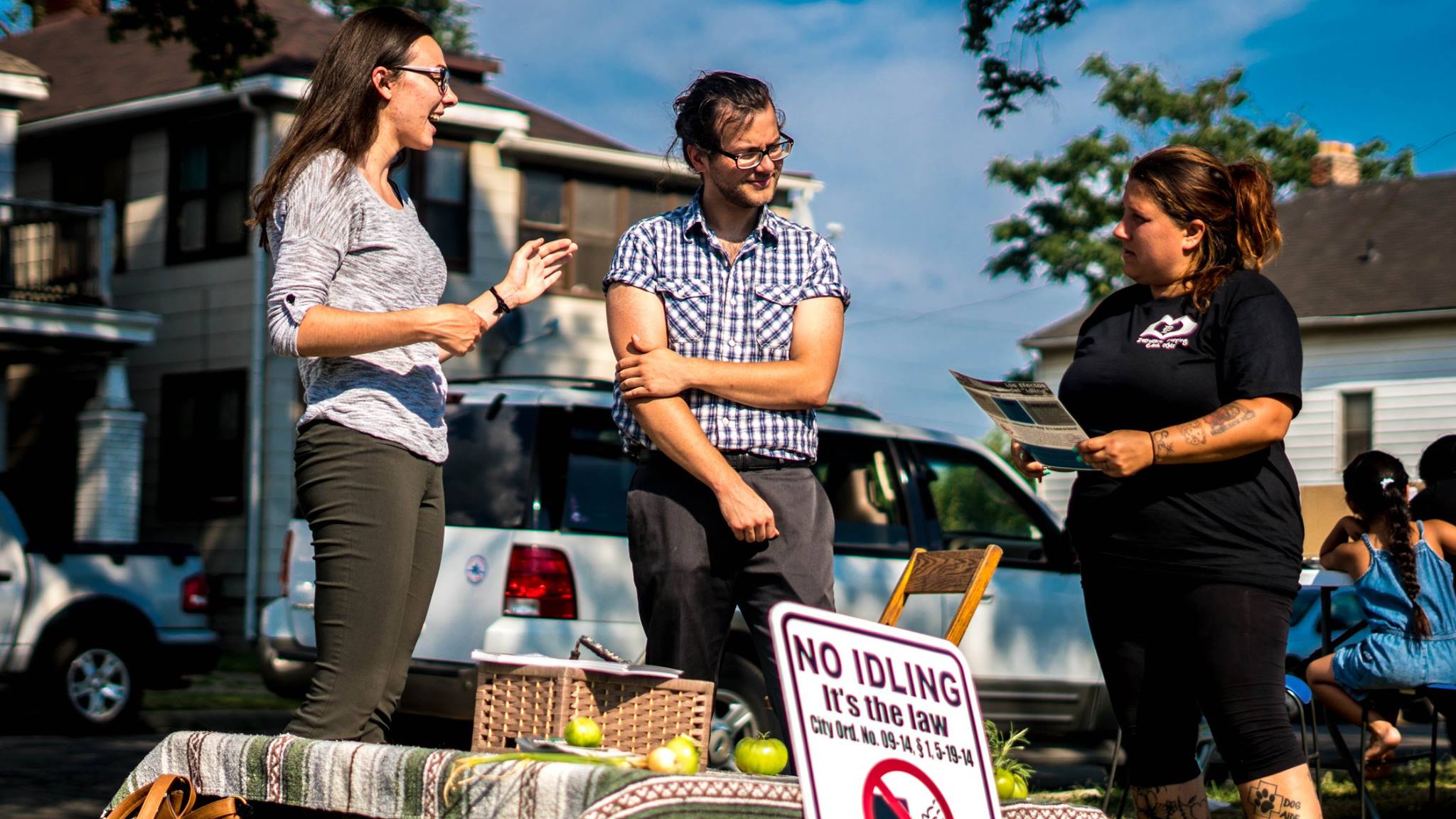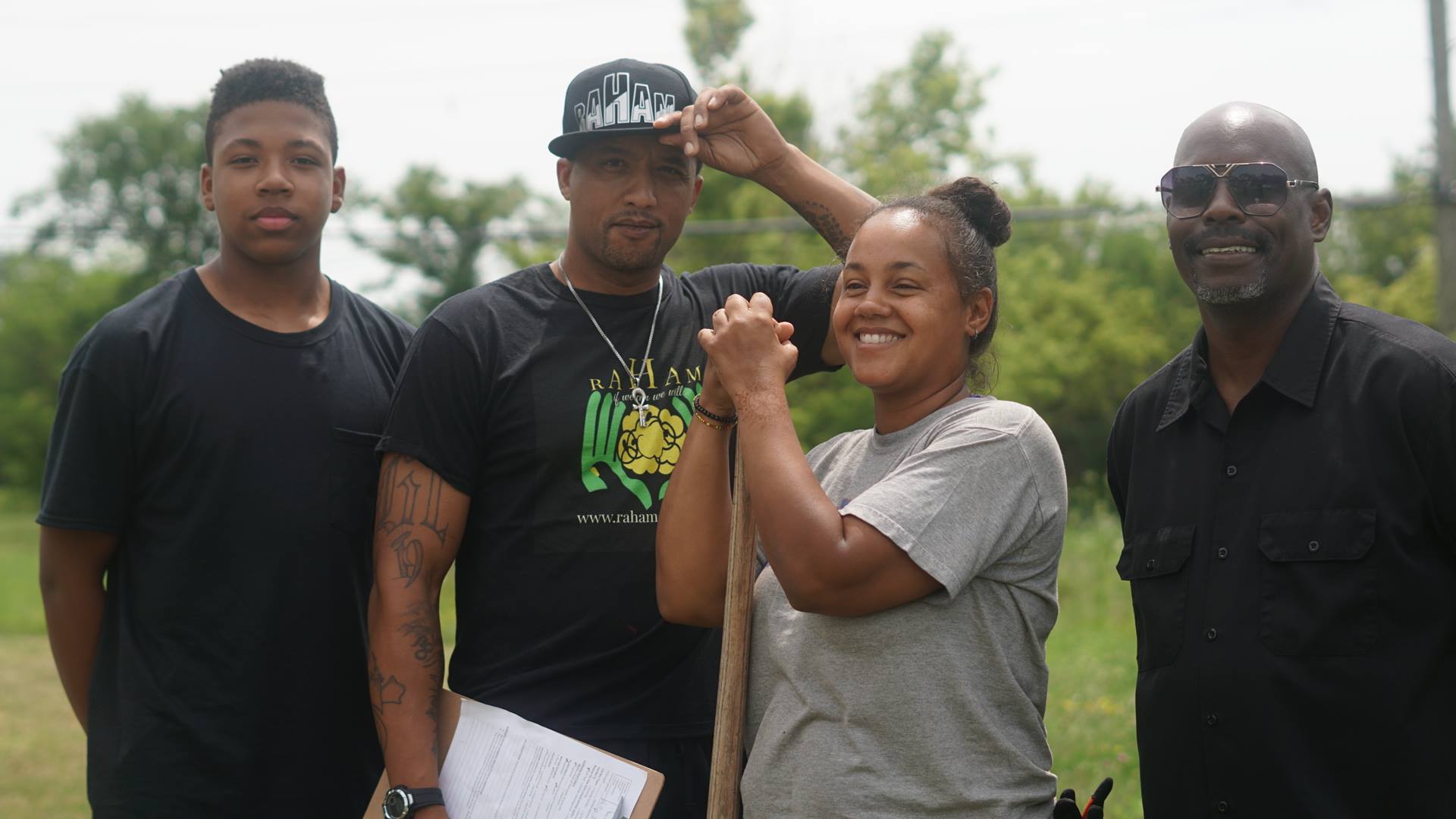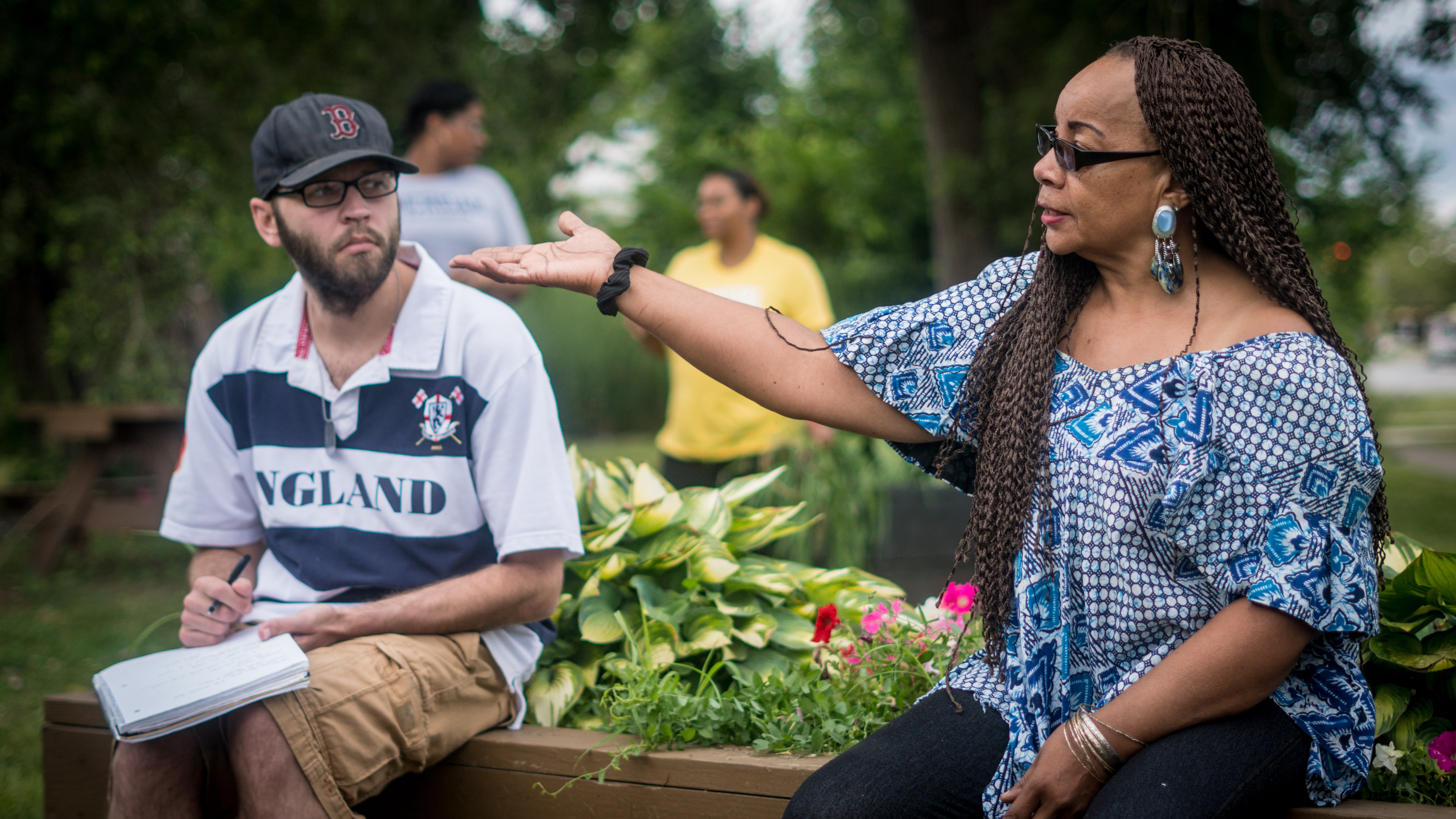


Thank you for your interest in our advocacy work. We aim to inform how individuals can participate in advocating for improvements in their community. In response to requests for guidance and advice, we have co-developed an environmental justice windshield tour and advocacy mini-training with the CURES Community Advisory Board for those interested in participating in the policy and advocacy process.
Environmental Health & Justice Windshield Tour
Purpose
Our environmental health and justice windshield tour is an educational tool for individuals within and outside of the community to gain a deeper understanding of local environmental justice issues. This tour will visit areas where industry surrounds neighborhoods and negatively impacts various aspects of the health and wellbeing of the Detroit community. Thousands of people live, learn, work, play and pray in the shadow of these facilities and the tour honors their unique perspective and experience.
Sites
- Detroit Renewable Power (Detroit Municipal Waste Incinerator): the municipal waste incinerator was the largest solid-waste incinerator in the state until its closure in spring of 2019. This was at the center of environmental justice complaints for consistent violation of air quality standards and severely impacting the health of residents near the facility.
- Ambassador Bridge: in operation since 1929 and is the largest international suspension bridge in the world. It is also America’s busiest border crossing; the bridge is responsible for approximately 25% of all trade between the US and Canada. The new Gordie Howe Bridge is a cable-stayed international bridge across the Detroit River, currently under construction. The crossing will connect Detroit and Windsor by linking Interstate 75 in Michigan with Highway 401 in Ontario. With over 10,000 vehicles crossing daily, many of them freight trucks, excessive diesel emissions are an environmental burden on both Detroit and Windsor, Ontario residents who live near the bridge. The new Bridge also displaced many residents in the Delray neighborhood.
- Delray: a neighborhood in southwest Detroit that has been part of the city’s industrial uses since the 1800s and home to over a dozen facilities on the EPA’s Toxic Release Inventory.
- Zug Island: is located in the Delray neighborhood and has been center to the area’s industrial footprint. Named after Samuel Zug, it was industrialized in the late 1800s. The two largest plants on the island are a mill for US Steel and a coke battery owned by DTE, the local utility company.
- Wastewater Treatment Plant: the largest single-site wastewater treatment facility in the United States. As of 2012, it served approximately 40% of Michigan’s population, concentrated across the metropolitan area.
- 48217: Detroit’s southernmost ZIP code, named Michigan’s most polluted ZIP code by both researchers and community advocates. Within its borders a petroleum refinery owned by Marathon Corporation and other industrial facilities are juxtaposed within a residential neighborhood. 48217 is near the geographic center of an EPA-defined non-attainment zone for sulfur dioxide. Rates of cancer and respiratory disease among residents are some of the highest in the state.
- Marathon Petroleum Refinery: located in 48217, the sixth-largest petroleum refinery in the nation, and the only one in Michigan. The plant produces 400,000 gallons of transportation fuel daily, utilizing raw materials from the Alberta, Canada Tar Sands. The facility has sparked community concerns due to pollutant discharges, and Marathon’s requests for variances to the city’s Bulk Storage Ordinance in order to store petroleum coke, and refining byproduct, in open-air containers.
- Eastern Market: one of the country’s oldest historic public market districts, operating since 1891. It hosts a year-round produce market and other seasonal markets throughout the summer and fall. It has grown from a public market to a vibrant district promoting food security, local businesses, and artists.
Operating Norms & Guidelines:
Role of Tour Guide
This tour will be led by expert "tour guides". Expertise may be from practical experience or professional experience or a combination of both. We honor all forms of expertise.
Role of Attendees
- Take care of yourself.
- Physical health: Certain precautions may be recommended for tours. Masks may be provided to limit exposure to toxic air. Participants may be asked to remain on the bus in certain areas due to air quality.
- Mental health: The tour can elicit strong emotion. Use proven destressing, self-regulation or self-soothing techniques if you are experiencing "negative" emotions.
- Practice cultural humility.
- While processing information, explore whether your thoughts, feelings, questions reflect a bias or stereotype. If so, allow yourself to question those assumptions, biases, and stereotypes to draw a new conclusion.
- Notions of success, health, family and so many others are culturally-influenced. Avoid mapping your own ideas on to another person or community.
- Listen to perspectives, questions, or critiques with openness and curiosity.
- The tour is an educational tool. It is an opportunity to listen and learn.
- Use the WAIT method if there are opportunities to speak, but first ask yourself, "Why Am I Talking?" (view the WAIT diagram here)
Registration
Making Change Agenda
Participation Questionnaire
Key Contacts and Resources:
- Detroit City Council
- State of Michigan Legislature
- Michigan House of Representatives
- Find your state senator
- Nonprofit Advocacy Michigan Primer
Advocacy Training & Materials Archive:
Our tours and advocacy training were co-developed by the CURES Community Advisory Board (CAB), Community Engagement Core (CEC) and led by CEC leader Professor Nick Schroeck. Special thanks to our friends at Detroiters Working for Environmental Justice (DWEJ) for their contributions to the tour and materials.
If you have questions about our advocacy events, please contact our Community Engagment Coordinator, Rochelle Chapman at rochellechapman@wayne.edu